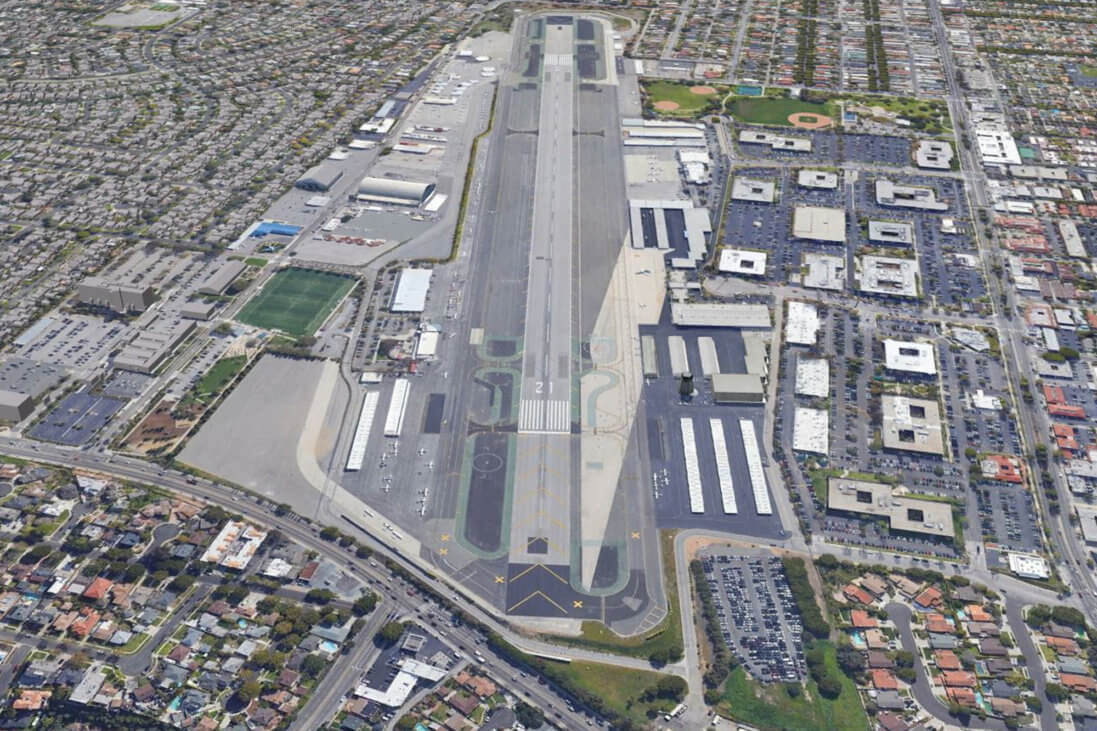
Updated Oct. 2, 2019
Nighttime closures will begin this month at Santa Monica Municipal Airport (SMO) as crews begin removing pavement from the ends of the embattled airfield’s shortened runway.
The five-phase project which began on June 16, has a revised target completion date of Nov. 8.
Updated closure information will be published as NOTAMs and posted to the airport’s website.
The affected areas, comprising approximately 750 feet of runway pavement and accompanying taxiways at each end, were closed to aviation operations at the end of 2017 when the city used markings and signs to reduce available runway surface length to 3,500 feet, but left the pavement in place.
As part of this upcoming project, the city will now replace that “excess” pavement with hydroseed. NBAA and others note those surfaces will not offer the same level of safety as pavement in the event of runway overruns. NBAA also expressed concern the grass could attract birds and other wildlife.
“Santa Monica officials continue to act irresponsibly by wasting millions of taxpayer dollars on a project that has no benefit, and which only reduces the safety and disaster relief capabilities of their community’s airport,” said Alex Gertsen, NBAA director for airports and ground infrastructure.
Review a notice about the project.
Legal Actions Pending to Preserve SMO
Pavement removal is the latest effort by city officials to further degrade SMO’s aeronautical capabilities. City officials have the option to close the airport after 2028 premised on a controversial settlement agreement between the city of Santa Monica and the FAA; however, airport proponents also have remained steadfast in their efforts to protect aviation interests at SMO and remain optimistic about preserving the airport well beyond that date.
Last November, NBAA led an effort with the Aircraft Owners and Pilots Association and the General Aviation Manufacturers Association, asking the FAA to reevaluate the agency’s prior approval for the city to use airport funds for portions of the pavement removal and reseeding project.
As a result, the FAA initiated a Part 13 complaint and suspended its earlier guidance, directing the city that “no airport revenue may be used to fund the removal, pulverization, or destruction of the existing pavement of the former runway or taxiway areas” pending its final decision.
NBAA also has a pending legal action before the U.S. District Court for the District of Columbia, asserting the FAA exceeded its authority when entering into the settlement agreement with the City of Santa Monica. An initial ruling from the court is expected later this year.
“Should airport proponents prevail, it will ultimately set the course to vacate the settlement agreement,” Gertsen emphasized. “The city would then need to restore the runway at SMO.”
While the shortened runway resulted in operational limits for some aircraft, business aviation has adapted with a number of jets continuing to fly from SMO safely, quietly and efficiently, emphasizing its valuable role in the region and the national aviation system.


 International Business Aviation Council Ltd.
International Business Aviation Council Ltd.